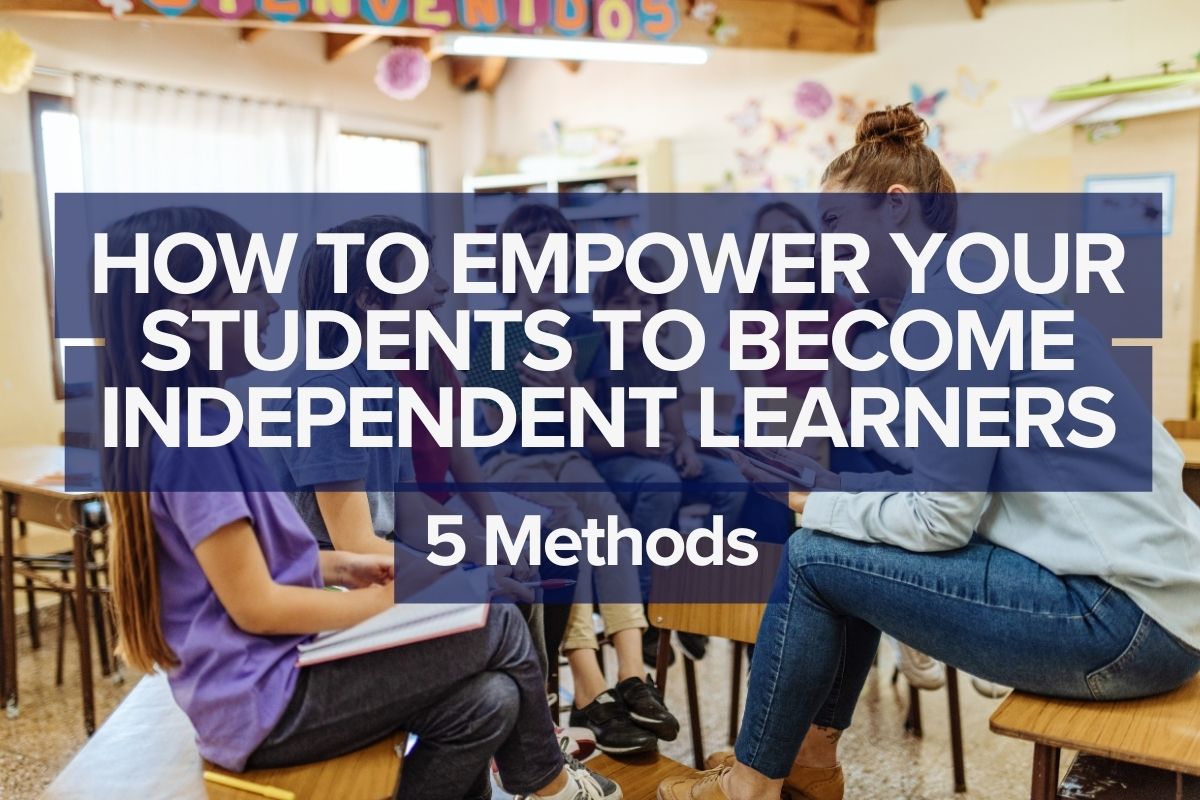What is Independent Learning?
Independent Learning, also called self-directed learning, autonomous learning, or self-regulated learning, is a “method or learning process where learners have ownership and control of their learning” according to Springer Publication. Empowering students to become independent learners should be one of the most important missions of a teacher.
Philip Candy argues that independent learning can be developed “only after the learner has a mental map of the subject“. Mental Mapping or cognitive mapping is a technique derived from behavioral geography that is defined as a “product of a series of psychological processes” that focuses on better perceiving and understanding the underlying motives behind learning a certain subject in school.
Usually useful for visual learners, it was proven to be especially effective for enhancing the cognitive processes in one’s mind that will eventually lead to a better grasp of a subject. From my point of view, it is an effective study technique that can be compared to a key opening a door behind which lies a web of information waiting to be decoded. It doesn’t necessarily teach students what they need to learn, but it sets the stage for asking questions about the subject.
What are the Advantages of Independent Learning?

Teachers should promote independent learning in the classroom using certain techniques to increase motivation, promote confidence and perseverance, enhance critical thinking, and develop time management skills. Empowering students to become independent learners is beyond just improving their academic performance; it’s about fostering lifelong learning skills and equipping them with the ability to navigate the ever-changing world with confidence and adaptability.
5 Methods to Help Students Become Independent Learners
Some of your students may already show signs of independence in learning. However, some will still need a teacher’s support in becoming autonomous and becoming proactive to achieve academic success.
A teacher’s role extends beyond simply imparting knowledge of their subject. A teacher’s most important mission is to empower students to assess their own strengths and weaknesses, to set appropriate learning goals, and to be able to evaluate their progress in school to become better and more independent in the classroom.
Curious about how to achieve these skills in your students? Discover five key methods that empower students to take charge of their education and thrive in any learning environment.
Don’t Give Away the Answers Immediately

Withholding the answers, even though difficult to put into practice, is one of the best approaches to guiding the students to come up with the right answer. This method can be also applied to asking the best minds in the classroom to not divulge the right answer immediately and to wait for the other students to prepare an answer too. That will ensure an environment where every student will be encouraged to actively think about the problem or question at hand and determine the necessary steps involved in coming up with an answer (even though it’s not the right one).
This process ensures satisfaction in the classroom in the long run while allowing struggling students to improve themselves and discover ways to solve problems.
Let the Students Self-Monitor Their Progress

Encouraging students to reflect on their performance and progress is crucial in nurturing independent learners. By prompting them to identify their strengths, weaknesses, and areas for improvement, teachers can empower them to take ownership of their learning journey. This reflective practice cultivates self-awareness, a key ingredient for effective self-regulation.
Simple yet effective strategies, like posing questions such as “What did you learn in today’s lesson?“, can significantly impact student learning. These prompts encourage metacognitive thinking, enabling students to identify areas for improvement and develop critical self-assessment skills.
By incorporating these practices into everyday learning, students become active participants in their growth, transforming into independent learners who can navigate their educational journey with confidence and resilience.
Promote Peer Learning

An effective and common method to empower students to become independent learners is through Peer Support Groups. These support groups aim to promote collaborative learning experiences that allow students not only to integrate at school but also to exchange knowledge with their peers. Placing different levels of students in the same peer group and then giving assignments that will challenge each of the students is a formula that grants students the opportunity to build a conceptual understanding of the subject.
Apart from enhancing academic success, peer support groups are also viewed as a resource for change and achieving the target behavior. These groups contribute to reducing exclusion in the classroom, enhancing resilience, and providing students with valuable and memorable experiences.
Cultivate a Growth Mindset in the Classroom

A Growth Mindset is a crucial element for success at the individual level, and teachers can be the promoters of this mindset among students. Nurturing such a mindset requires a comprehensive approach that fosters collaboration, encourages effort to understand the subject, and creates a safe, supportive environment.
Moreover, working along with parents in supporting a child’s growth mindset is essential for developing resilience and enhancing proactive learning. By helping them understand their strengths and weaknesses, offering constructive feedback allowing mistakes, and even encouraging them, teachers and parents together can guide the children towards becoming independent learners.
A great resource for promoting resilience and a growth mindset is Big Life Journal, a journal for guided self-reflection with prompts and activities suitable for every age.
Free Resouces:
Fixed vs. Growth: The Two Basic Mindsets That Shape Our Lives
Twenty Ways You Can Help Your Children Succeed At School
32 Fun, Creative, and Challenging Team-Building Activities for Teachers and Students
Scaffolding Learning

Scaffolding Learning is a method that fosters independent learning through a student’s ability to learn information from a more informed individual. Emerging from Lev Vygotsky’s Theory of Structural Learning, scaffolding emphasizes the role of intrinsic development in stimulating the topmost mental abilities and cognitive activities based on the previous stages of learning.
Scaffolding learning is a known process used by teachers that relies on placing a capable student in a group with a struggling student in order to transfer information. This method challenges struggling students to learn from their colleagues, while capable students get a better understanding of the subject by being in the position of a teacher.
From dependent learners, struggling students will often transition towards autonomous learners by getting through three stages. In the first stage, the students are the observers, then they switch to being part of the team. In the later stage, they become independent and do not rely anymore on the capable students’ support.
Conclusion
Independent learning is a valuable skill that can be developed through a variety of methods, including mental mapping, self-monitoring, peer learning, cultivating a growth mindset, and scaffolding learning. By implementing these strategies, teachers can empower students to become independent learners who are well-equipped to succeed in their academic and personal lives.
If you are a student trying to become more independent in school, read more about habits that helped me become a smarter person. See also my blog post on effective study techniques you can use in school to get straight As every time.






Pingback: How to Teach Time Management Skills in Classroom
Pingback: Beyond the Books: Extracurricular Activities Teachers Should Encourage